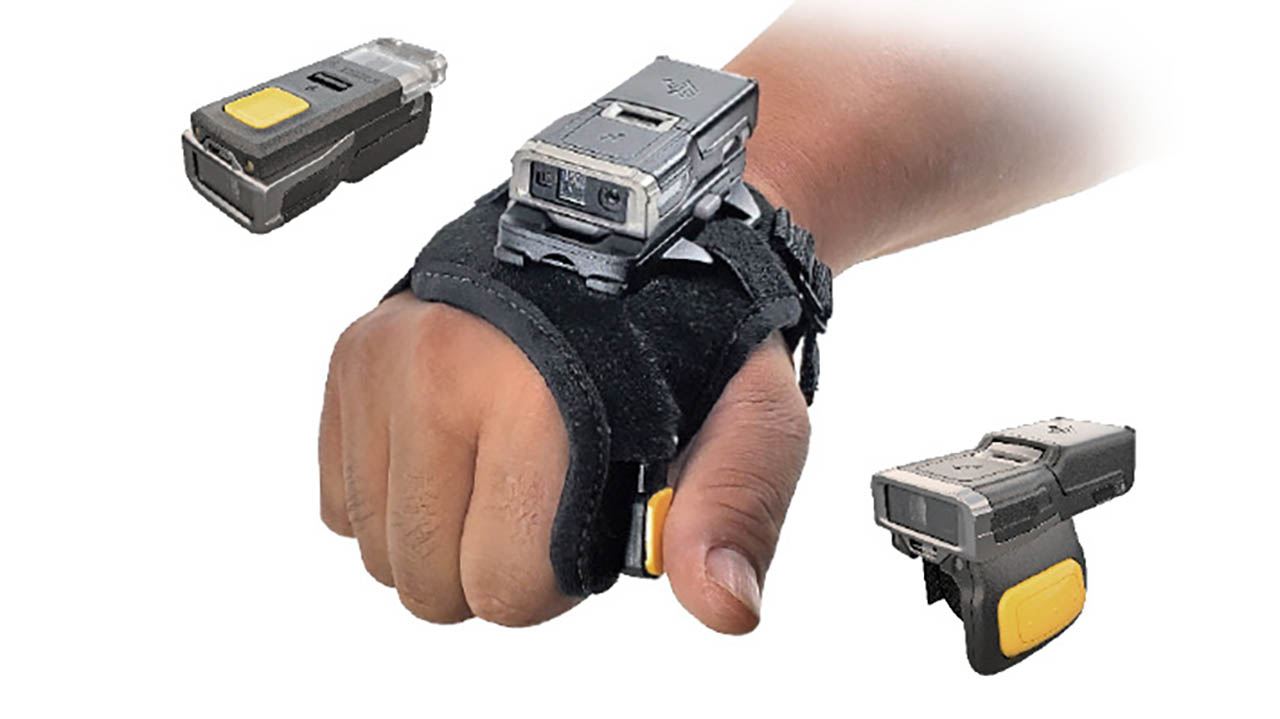
Industry’s First Freezer-Rated, Single Finger Bluetooth Wearable Scanner Hits the Market at Just the Right Time
There was 3.3 million square feet of speculative cold storage development underway in the U.S. alone in Q2 2022, up from only 300,000 sq. ft. in 2019. To me, that signals a forthcoming spike in the demand for – and movement of – cold chain goods. And I believe it will be even greater than what we’ve seen these past few years as organizations have gone to extremes to distribute pharmaceuticals and keep grocery shelves stocked.
That’s why my team and I have been working diligently to develop and bring to market the new Zebra RS6100, which is the only Bluetooth wearable scanner on the market that is rated for continuous use in cold chain operations. (It can operate in temperatures ranging from -22˚ F to 122˚ F/-30˚ C to 50˚ C when the extended battery is used.)
Why is This Such a Big Deal?
It’s a new world in order fulfillment across the pharma, grocery, beauty, electronics and floriculture industries. Goods that were once reserved for on-site distribution at pharmacies, hospitals, and retail stores are now being shipped direct to consumers via e-commerce fulfillment channels. And whether consumers are picking up cold chain goods in person or online, they expect fully stocked shelves. Companies can no longer justify out-of-stocks, at least not in consumers’ eyes.
In Zebra’s 15th Annual Global Shopper Study, retail associates said out-of-stock complaints are their number one frustration, which is not surprising considering that 49% of shoppers who leave without the items they intended to purchase say it’s due to items they want not being available. And the number one problem patients reported in Zebra’s latest Pharmaceutical Vision Study was needing medication that was unavailable or out of stock. Moreover, they won’t wait for you to restock. If you don’t have what they need, when they need it, they will go elsewhere. This is true of groceries, medication, and even electronics that have temperature sensitive batteries and other components.
That leaves front-line workers under immense pressure to pick, sort, pack, load, unload and put away goods at record speed, without making a mistake. So, if you are a team or company leader, you have an obligation to give workers the technology tools they need to move more cold chain goods – and move them faster. They must be able to safely and quickly build or breakdown pallets, unbox, sort and put away goods, or pick, pack and load orders. And they must be able to simultaneously record their actions via barcode scanning mechanisms.
Fielding the new Zebra RS6100 rugged Bluetooth ring scanner as part of a handsfree replacement to whatever handheld scanning solution you have in place right now is the fastest and easiest way to fulfill that obligation, especially if workers’ hands (or entire bodies) are constantly in cold storage units picking, sorting, or putting away items.
How the RS6100 Stacks Up Against Other Wearables – and Why It Stands Out on the Front Lines
If you’ve been considering a Bluetooth ring scanner for your workers, or they currently use a Bluetooth ring scanner but may need additional capabilities, let’s talk about what the new Zebra RS6100 wearable scanner offers you and your workers.
1. If you produce, ship, store or stock cold chain SKUs, someone in your organization will be going in and out of a freezer and/or cooler at some point in time. As I mentioned before, the RS6100 is the only Bluetooth wearable scanner on the market rated for use in freezers.
Ice cream freezers are typically -25˚C or colder, and the RS6100 can be used in temperatures as low as -30˚C/-22˚F. So, that gives you an idea of their durability both inside and out. Even better, the exterior plastics, internal battery and everything in between have been built to tolerate both freezing cold environments and searing heat exposure. So, if you want to equip loading dock teams, lift truck operators and sortation workers with the same hands-free wearable scanner, you can. This would allow them to easily traverse your entire operation – from cold storage areas to the dock or yard – without having to think twice. They can just keep on moving, scanning barcodes as they go, and data will keep flowing bidirectionally between the front lines and back-office systems.
2. If your front-line workers are scanning approximately 16-20 barcodes per minute for eight, 10 or even 12+ hours, they’re going to need a scanner that is extremely comfortable to “carry” around and use.
That’s why the RS6100 is such a great option.
It’s small (only two cubic inches), lightweight (only two ounces) and can be worn on a single finger, on the back of the hand or even on a lanyard around their neck. Technically, there are five different “mount” configurations – and even more if you consider that the back of hand mount and single finger mount allow for ambidextrous use. What’s really nice is that these mounts are technically accessories that could be changed out as easily as you change your personal smartphone case. If they want to use the lanyard for the first half of the day when they are primarily assisting customers and the single finger mount the second half when they switch to picking and packing orders, they could.
So, if you’re looking for that “one device for all” for scan intensive applications, you may want to have a group of employees across different functional areas try out the RS6100. It can wirelessly pair with different Zebra enterprise mobile computers, including the WT6300 wearables, TC21/TC26 and TC53/TC58 handhelds, and ET4x tablets as well as any Bluetooth smartphone, tablet, or PC you may use within your operation.
The RS6100 can also be connected to the host device as a corded* or cordless setup depending on your battery/power management preferences. Either way, data is transmitted wirelessly via Bluetooth, and Zebra’s Wi-Fi Friendly Mode prevents the Bluetooth signals from interfering with your Wi-Fi connections.

3. If your workers would be far more productive (and energized) if they didn’t have to walk, bend, reach or climb as much to scan barcodes, then the RS6100 is going to be a hit. It is powered by the Zebra SE55 1D/2D Advanced Range Scan Engine with IntelliFocus technology, which is extremely effective at scanning damaged barcodes or barcodes covered by shrink wrap. Thanks to this scan engine, the RS6100 can also capture small, high-density and closeup barcodes as well as barcodes positioned as far as 40 feet/12 meters away. And it uses a green laser aimer that’s 7x more visible than the traditional red crosshair laser to ensure workers are hitting the barcode spot on. So, they don’t have to make any major moves – or, really, any moves – to successfully decode every package or pallet barcode, whether the barcode is close to the ground or on the top rack.
Now, there are several other things that make the RS6100 a better choice for cold chain applications along with pretty much every scan-intensive workflow in the supply chain. This includes its 6-foot drop rating and the high-density charging cradle options that make backroom equipment management so much easier than ever before. But I would say the features and capabilities that matter most are those that directly address your needs. So, talk to your local Zebra representative about this scanner – and other options – to see which is best.
One thing worth noting is that the RS6100’s triggers, mounts and batteries are all compatible with the triggers, mounts and batteries used with the RS5100. So, if you decide to give workers who go into freezers or coolers a RS6100 wearable scanner but want to give everyone else an RS5100, you’ll only have to buy one set of accessories that can be shared workforce wide.
Don’t Forget
Front-line workers need all the help they can get right now as they rush to move more refrigerated and frozen goods – and move them faster than ever – from production lines to warehouses, retail shelves and consumers’ homes. If they use a handheld mobile computer or scanner today, must frequently find a workaround to receive or share vital workflow information, or walk any amount of distance to capture barcodes, that’s a sign that it’s time to look at the cordless RS6100 Bluetooth wearable scanner.
If workers aren’t working in freezers or they don’t have a need for longer range scanning capabilities, the RS5100 may be perfect. But if they handle cold chain goods in cold storage environments, then they’re going to need the RS6100 to stay productive as they pick orders, manage inventory, move pallets, operate machinery and do whatever else they have to do to keep the supply chain running smoothly and shelves stocked.
So, take a few minutes right now to watch this video, read up on the full details of the RS6100 and then reach out to your local Zebra representative to set up a time to talk in depth about your operational objectives, your workers’ current challenges and how this wearable scanner can be integrated into your technology architecture to support greater workflow agility, improve inventory monitoring, and track order progress.
And whichever wearable scanner you choose, please don’t forget to opt into the Zebra OneCare™ Maintenance Plan that is most suitable for your usage level and support need. You need those scanners to stay online 24/7 – they are the lifeline for your front-line workers. You can’t expect them to keep goods moving and shelves stocked if their barcode scanner is offline. Take advantage of the device health monitoring and maintenance services offered with Zebra devices. They go so far above and beyond what you’ll find with consumer devices or even some enterprise device manufacturers’ service plans. Consider OneCare your insurance plan. Should something unexpected happen, you’ll be back online and moving again quickly – and you won’t have to incur unexpected repair or replacement expenses. My colleague Matt Rance made a very strong case for why you should always subscribe to maintenance plans when electrical and mechanical components are involved:
Three Reasons Why Maintenance Plans are Always Worth the Money
###
Related Read:
*Corded setup is only available with select Zebra devices.

Dan Baldwin
Dan Baldwin is the Senior Product Manager for the Wearable category at Zebra Technologies. In this role, he is responsible for new product development and management of the wearable solutions portfolio, which includes wrist mounted mobile computers, ring scanners and rugged headsets. Zebra’s wearable solutions are utilized by a wide range of industries, including Retail, Transportation & Logistics and Manufacturing, to maximize worker productivity by enabling hands-free operations.
Since joining Zebra in 2015, Mr. Baldwin has engaged with customers’ operations and technology teams, as well as solution partners, to translate their needs into innovative, next generation wearable platforms.
Mr. Baldwin has more than 20 years of experience in information technology, including positions in Product Management, Business Development, Operations and Strategy at a number of Fortune 500 companies, including Symbol Technologies, Motorola Solutions and IBM.
Mr. Baldwin holds an MBA from the New York University Stern School of Business and a Bachelor of Science from Harvard University.




